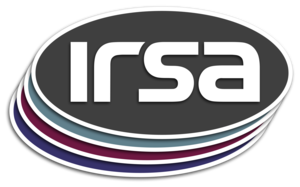Photometric calibration for 2MASS was performed using observations of calibration fields made at regular intervals during each night of survey operations. Measurements of standard stars in the fields were used to derive the photometric zero point offsets as a function of time during each night. Atmospheric extinction coefficients were derived from 2MASS observations made over long periods.
2MASS calibration fields, or tiles, are 1° long in declination and approximately 8.5' wide in right ascension. There are 35 regular survey calibration fields distributed at approximately two hour intervals in right ascension near declinations of approximately -30°, 0° and +30°. An additional five calibration fields were defined in and around the Large and Small Magellanic Clouds to support the deep observation (6x) campaign towards the end of survey operations.
Over the course of the survey, the regular calibration fields were scanned between 562 and 3692 times in nominally photometric conditions. Equatorial fields were observed from both observatories, so were observed more frequently than those near ±30° which were observed with only one telescope. The special Magellanic Cloud calibration fields were observed 108 to 468 times between November 2000 and February 2001.
The following table contains brief descriptions of the entries in the Survey, 6x and Calibration Merged Point Source Information Tables. The merged source tables contain the mean positions magnitudes and uncertainties for sources detected multiple times in each of the 2MASS data sets. The merging was carried out using an autocorrelation of the respective databases to identify groups of extractions that are positionally associated with each other, all lying within a 1.5" radius circular region. A number of confirmation statistics are also provided in the tables that can be used to test for source motion and/or variability, and the general quality of the merge.
This dataset or service is made available by the Infrared Science Archive (IRSA) at IPAC, which is operated by the California Institute of Technology under contract with the National Aeronautics and Space Administration.




